Learning communities to foster student connection
Peer-to-peer connection is associated with positive outcomes in higher education, but it can be difficult to achieve for remote learners. This challenge is pronounced at Calbright College, an online community college in California that offers self-paced and competency-based certificate programs geared toward working adult learners. Working alongside collaborators at UC Irvine, we partnered with Calbright to develop ways to foster a sense of belonging and togetherness among students in an online setting.
Our approach
Building on evidence suggesting high-quality interpersonal interaction improves academic outcomes in online learning, we worked collaboratively to develop a model of online learning communities to help small groups of students connect with each other as they get started in their Calbright program.
Key elements of the model include:
Groups of 7 to 10 students who start their program in the same week participated in weekly workshops and other activities over their few weeks.
Workshops with orientation content broken into manageable chunks to give students more time and space for their transition to being a student at Calbright.
Students had access to a dedicated slack channel and Canvas modules to facilitate asynchronous connection and access to resources.
A team of academic allies who were current or former Calbright students facilitated workshops and created other resources for students.
The results
Evidence from a three-month pilot test suggests that this kind of approach can help accelerate student progress, giving learners lasting momentum through their programs. Three months after starting their programs, students who were offered learning communities completed roughly 40% more program modules compared to a control group of students not offered learning communities as part of our pilot.
One likely driver of this progress was increased engagement with Calbright’s support services: students in the pilot group were around 16% more likely to activate their student Slack account and 18% more likely to use synchronous supports like tutoring or counseling.
Interestingly, engagement was especially strong among learners over age 35, women, and those who identified as career-motivated in enrolling at Calbright. These patterns suggest that structured opportunities for connection can be particularly helpful for students who may benefit from additional scaffolding.
While we saw encouraging early results, the pilot also surfaced important questions about how best to balance community, flexibility, and scalability. For example, while the synchronous format was nearly twice as popular as the asynchronous format, only 1 in 6 of students who selected it actually showed up to a workshop. The upshot is that, rather than adopting the model wholesale, we're using insights from our piloting to develop a new experience that builds on what worked—and evolves where needed.
The power of iteration
The learning communities model we tested wasn’t built in one go—it evolved through successive piloting, with learnings along the way continually informing new changes and adaptations. We adjusted formats, facilitation, and content based on what we saw in the data and heard from students themselves.
This kind of rapid-cycle iteration is core to our work. Whether a specific model continues in its original form or not, what endures is the process: design, test, adapt. That’s what allows us to uncover effective new ways to support adult learners—quickly, and at scale.
What students say…
“Being part of learning communities helped me grow both professionally and personally, boosted my confidence, and improved my ability to work with others.”
“Without [learning communities] navigating these resources can be overwhelming, particularly for those without prior tech experience.”





